Here's an obvious observation: Doing art -- whether music, painting, writing, dance, whatever -- can contribute immeasurably to psychological well-being. I said that recently to a wonderful jazz musician I know, and he immediately responded, "Then why am I so screwed up?" It was a good retort and I said so. He thought a second and then said, "But without music I'd be a lot more screwed up and would be missing the thing that gives me the most happiness in my life."
Clearly, art is not the source of the greatest happiness in everyone's life, but it is a tremendous source of happiness for a great many people. And given the common belief that madness and creativity are linked, it is surely worth noting that whether or not mental illness contributes to art (I am doubtful), art certainly can contribute to mental health.
There are two dimensions to this. Art can be a healing force for people with mental disorders, including people with dementia, and art can contribute to psychological well-being of people regardless of whether they have a mental disorder or not.
What is it that art can contribute?
In his recent book, Flourish, Martin Seligman -- often regarded as the father of positive psychology -- maintains that there are five critical elements of psychological well-being, "positive emotion," "engagement," "accomplishment," "positive relationships," and "meaning."[1] In simple terms, living well involves feeling good about life, having something to do that you care so much about that you immerse yourself in it, becoming good enough at something to take some pride in it, having people in your life whom you care about and who care about you, and feeling connected with something that takes you beyond yourself such as your family, your community, your work, and so forth.
It is clear, I think, that art can provide each of these elements of well-being. Most obviously, people who do art enjoy doing it, not always maybe, but usually. They also immerse themselves in it, spending hours at a time playing, writing, painting, dancing, and so forth. Time seems to disappear, to be suspended. Much of the time spent working at art is practice rather than creative discovery (perspiration rather than inspiration), and practice, of course, is essential for building skill, which is itself a source of great satisfaction. Doing art also connects the person doing it with other artists and with audiences. It is, or at least can be, a source of important friendships. Doing art also connects the artist with a field of art, with a history and a language that goes far beyond what any individual artist does. Doing art has meaning not just for the individual doing it, but also for a society, for a culture.
Art also helps people to connect with and deal with their emotions. Art can help a person reach into largely unconscious parts of the mind and experience dimensions of self otherwise buried and voiceless. It can also help a person get a handle on emotions that are, to borrow a word from T.S. Eliot, "undisciplined," and therefore inarticulate. Through the arts people can find voices to express dimensions of self usually left in silence. And through art, people can shape their own identity. Art is not just self-expression; it is also self-creation.
There's another element of psychological well-being -- experiences of dimensions of human life that go beyond the ordinary. Jonathan Haidt, author of The Happiness Hypothesis, refers to this as "divinity" or "sacredness," terms I find a bit too religious.[2] I prefer the idea of "transcendent" experiences, which can be spiritual, aesthetic, or moral. These are experiences that elevate a person beyond the brutish and humdrum qualities of much of human life. What we call them -- "divine," "sacred," "transcendent," or something else -- doesn't matter. The experiences matter a great deal.
Art is one source of transcendent experience, not the only one but a very important one. Arthur Danto -- a philosopher and art critic -- refers to the transcendent capacity of art as the "transfiguration of the commonplace."[3] By this he means that art somehow becomes imbued with meanings that go well beyond the surface of the artistic product. His example is Warhol's Brillo Box or Campbell soup cans, which somehow convey a significance way beyond their visual surface. Some of us, of course, are not captured by Pop art; but everyone who appreciates some sort of art experiences through it something powerful, significant, and elevating.
The contributions that art can make to psychological well-being via enjoyment, immersion, development of skill, revelation and expression of emotion, shaping of self, connections with people and a culture, and the potential for transcendent experience apply both to people without mental disorders and those with mental disorders. For them, art can have a great healing impact, a fact I have recently written about in other posts.
All of this has vast implications for how we can build satisfying lives for ourselves and our children and also suggests that there ought to be a public mental health agenda that is not limited to the treatment of mental illnesses, but which also addresses the human potential to live well.
Michael Friedman will deliver the keynote address at the NYS Psychological Association's Annual Conference on Art and Psychology on June 9, 2012. For information click here.
References:
[1] Seligman, Martin. Flourish: A Visionary New Understanding of Happiness and Well-Being. Free Press. 2011. Link here.
[2] Haidt, Jonathan. The Happiness Hypothesis: Finding Modern Truth in Ancient Wisdom. Basic Books. 2006. Link here.
[3] Danto, Arthur. The Transfiguration of the Commonplace: A Philosophy of Art. Harvard University Press. 1981. Link here.
For more by Michael Friedman, L.M.S.W., click here.
For more on emotional wellness, click here.